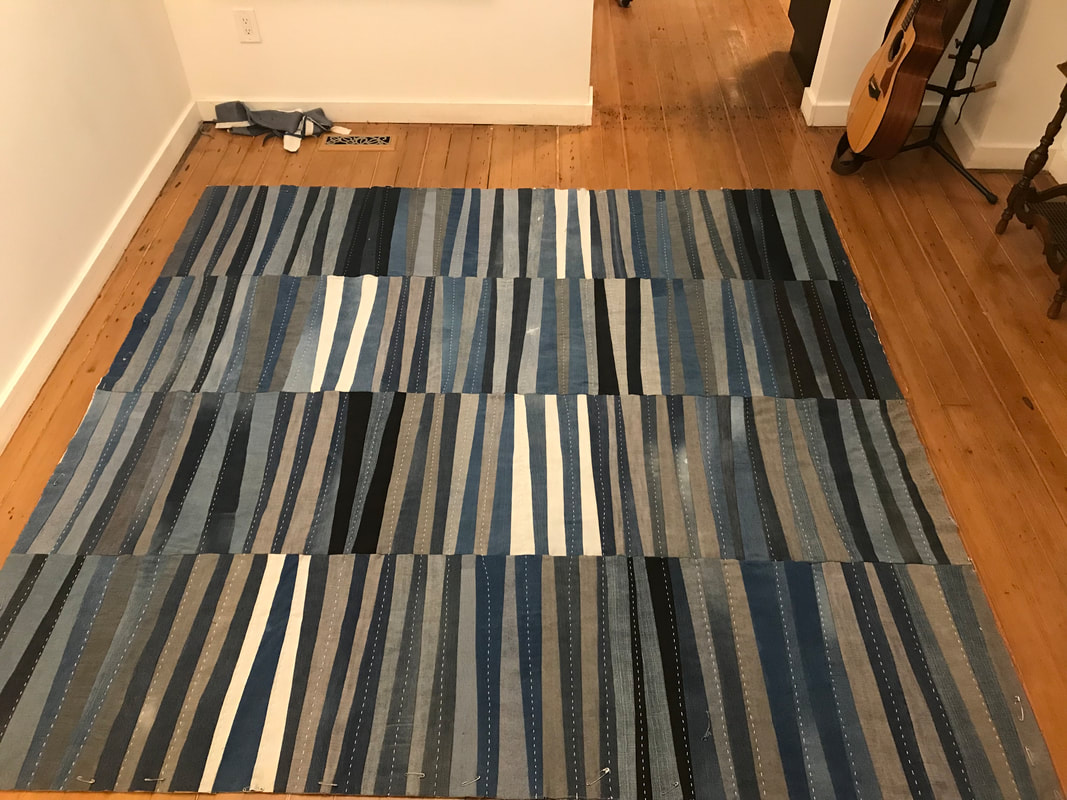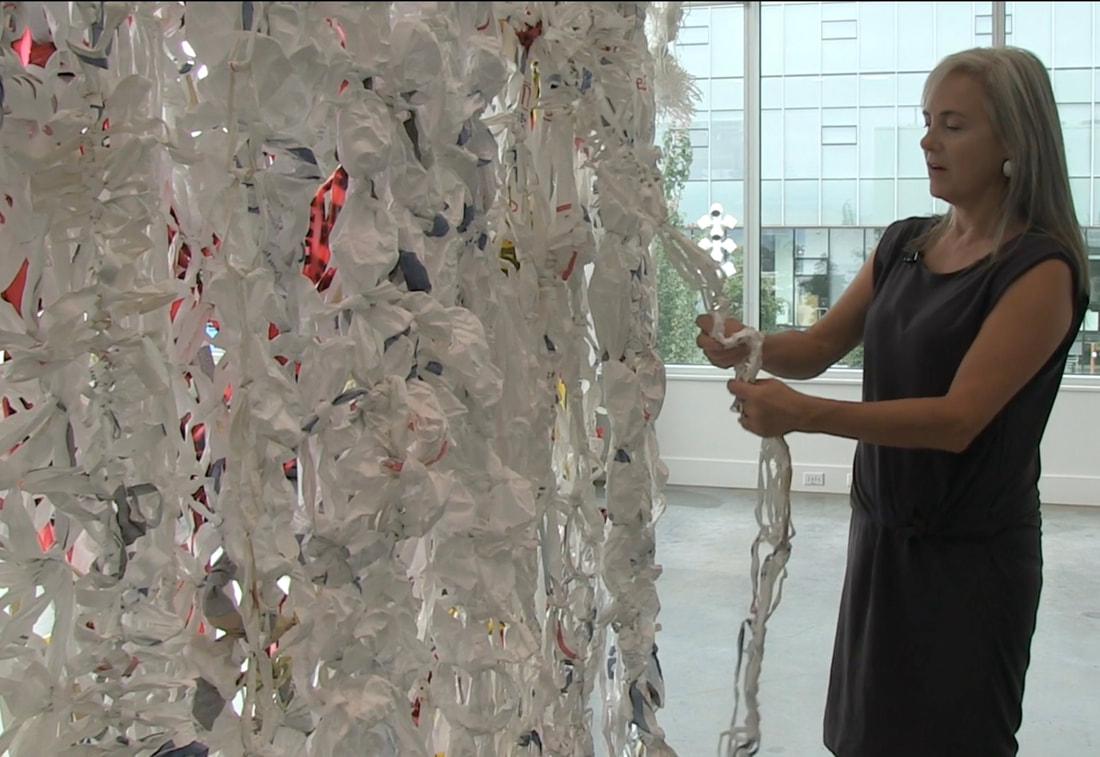
 Click HERE for a 10-minute journey through the methods and motivations behind this MFA thesis. (Film made by Ana Valine, Rodeo Queen Pictures, August 2020)
Where is the joy when you’re living in a time of a global coronavirus pandemic and a local toxic-drug epidemic? What is the use of making when your city is seized by global investment-real estate schemes, when there’s too much stuff in a overheated planet and a hateful, superpower president next door? These questions ricochet around my brain, only abating when this futile, exhausting expenditure of energy hones in on the rote activity of knotting and needleworking. The hand-wringing falls into rhythm as I grasp at lost, tossed threads that I make whole and into whole new ideas. Making is a very personal physical reaction to perilous times and unstable circumstances but working with found fibre is also an intrinsically social action that weaves in disparate economic circumstances, language, race, age and abilities. Braiding, stitching, knotting, needleworking create resilient connective tissue between one body and another. Strands thicken into solid links between the ancient and the modern, utility and self-expression, the digital and the physical, the personal and the political. By exploring the inherent qualities of abject manufactured material, the body binds with other bodies and other places, some known, some not. It is work, but outside the tumultuous dominant economic system. It is an experience of the history of production and distribution through the material at hand. Even in these times, when gathering around a table is a hazardous activity, when our pack species is feeling at loose ends, masked up and reluctantly apart, the tactility of rote hand-making grounds us into the here and now, one stitch, one loop, one knot at a time. We grasp at the tendrils, continuing the work, with the results standing as artifacts of a time, place and our individual and collective states of being. Three major works created over one year remind me of the uncertainty, the panic, the perilousness of these times, and of the solace gained through individual making and the joy of making with others. The three are relics of two years of material research that culminated in a Master of Fine Arts 2020 exhibit set up one day before the university locked down. 1. Scaffolds2. Resurge3. HearthI have this idea for building healthy community in this pretty/cold city through hand-making. It’s a process of making peace with ourselves and connecting with others, transforming individualized desires (thanks, capitalism) into shared desires for a sustainable life and world. 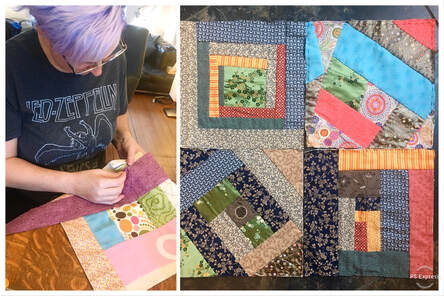 Vancouver artist Jenn Skillen — collaborator No. 1 — beta-tests a freeform, no-measure hand-stitched log cabin block method. (Carlyn Yandle photo) Vancouver artist Jenn Skillen — collaborator No. 1 — beta-tests a freeform, no-measure hand-stitched log cabin block method. (Carlyn Yandle photo) That's the idea. 'How' is the big question. I start with a few rules of thumb. (I love that phrase for its controversial origin that is a deep-dive into human history and etymology, but also for the visual of the hand-as-tool.) First, the activity must be low-barrier enough to open it up to as much collaboration as possible — no need for special skills or equipment or fees or even shared verbal language. Second, the project must use only found material: freely available, with no better use (because there's already too much stuff in the world). Third, the project must spark interest, otherwise, why would people bother? A decade ago, these rules of thumb resulted in The Network, an ever-growing public fibre-art piece engaging a wide variety of folks around Vancouver, co-created by Debbie Westergaard Tuepah. That knotty piece continues to weave through my work, mummifying a perfectly good painting practice, winding around ideas of alternative space-making, shelter, and safety nets. Now it's needling into my current project: the Safe Supply collaborative quilt. 'Safe supply' were the two words on the lips of the crowd at a CBC Town Hall gathering two months ago. Providing a safe supply of opioids would go a long way to addressing all the problems and fears raised by everyone from student activists to local businesses, from concerned politicians and developers to Indigenous elders: the toxic-drug death epidemic, violence, homelessness, sexual exploitation, theft, vandalism, mental illness. A safe supply is inherent in the view of addiction as a public health issue, not an individual, moral failing. 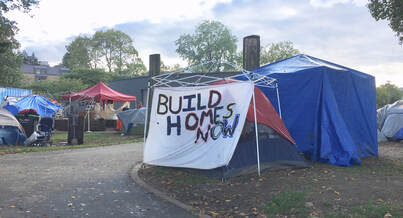 'Kettling' homeless people into Oppenheimer Park has resulted in a colourful display of a national humanitarian crisis. (Carlyn Yandle photo) 'Kettling' homeless people into Oppenheimer Park has resulted in a colourful display of a national humanitarian crisis. (Carlyn Yandle photo) Ground zero of this humanitarian crisis is the colourful, chaotic tent city crowded in Oppenheimer Park straddling Chinatown and the old Japantown. The sight of all those bright, tenuous shelters layer up with this history of racism and injustice, stolen land and lives, and soon I am binding up ideas of found colourful material and that call for Safe supply!, embedding it all in a design, with designs for this as a group project destined for exhibit in more privileged spaces. It is planned as a comforting activity in this often ruthless, discomforting city: a dis-comforter. 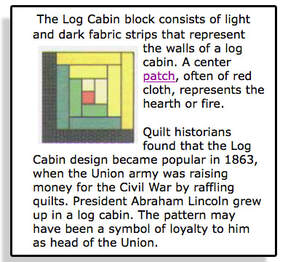 Historical clipping from the llinois State Museum website reveals the log cabin quilt has ties to ending slavery. Historical clipping from the llinois State Museum website reveals the log cabin quilt has ties to ending slavery. I begin this overarching theme one block at a time, and that block is, fittingly, the traditional 'log cabin.' There's a long history of the log cabin block, ingenious for its simple construction that makes use of even the smallest, thinnest available scraps as well as its history as a vehicle for social justice. I am attracted to the name that stands as aspiration for home and all that that entails, beginning with the hearth, the centre of the block. From the hearth, the block is built in a spiral of connected scraps to form a foundation for countless quilt designs (traditional examples below). The work has not yet begun but like all collaborations it begins with faith in people and trust in my practice. Something will emerge. We will engage. We will generate some heat in this log-cabin community. Some useful how-tos and overall pattern examples: |
Sharing on the creative process in long-form writing feels like dog-paddling against the tsunami of disinformation, bots, scams, pernicious sell sites and other random crap that is the internet of today. But I miss that jolt of inspiration from artists sharing their work, ideas and related experiences in personal, non-marketing blogs, so I'm doing my part.
browse by topic:
All
Archives
June 2024
|
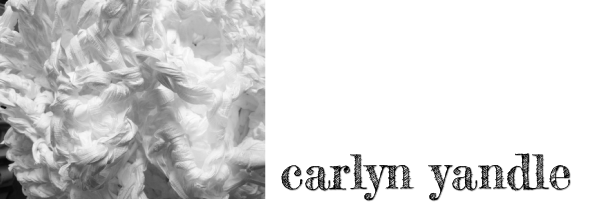
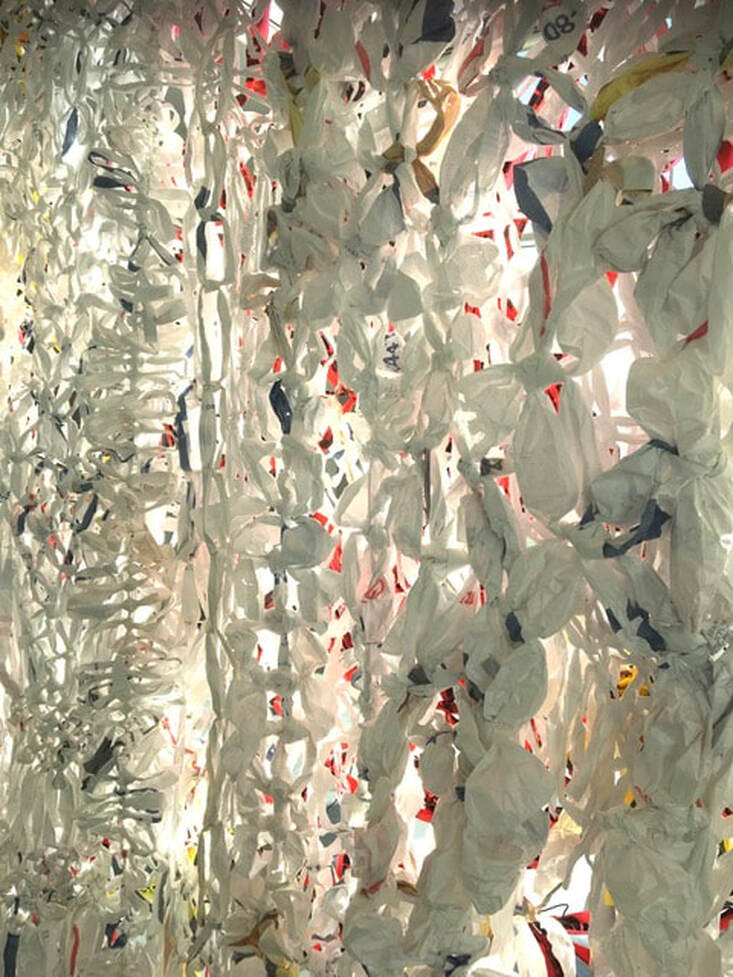
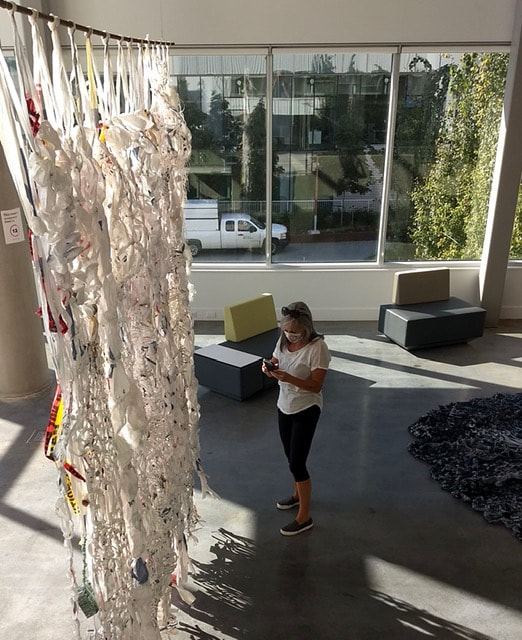
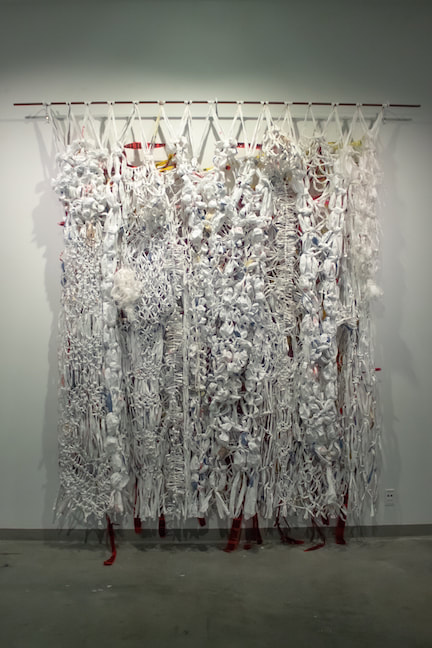
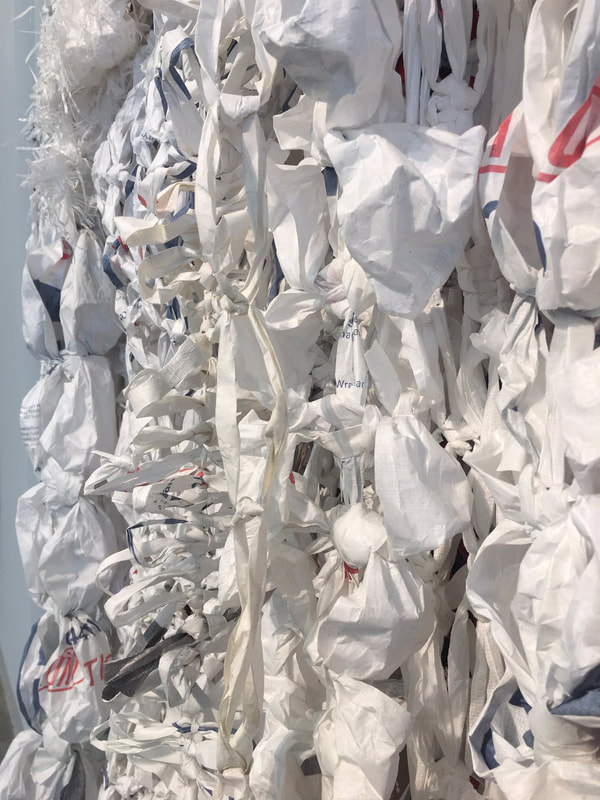
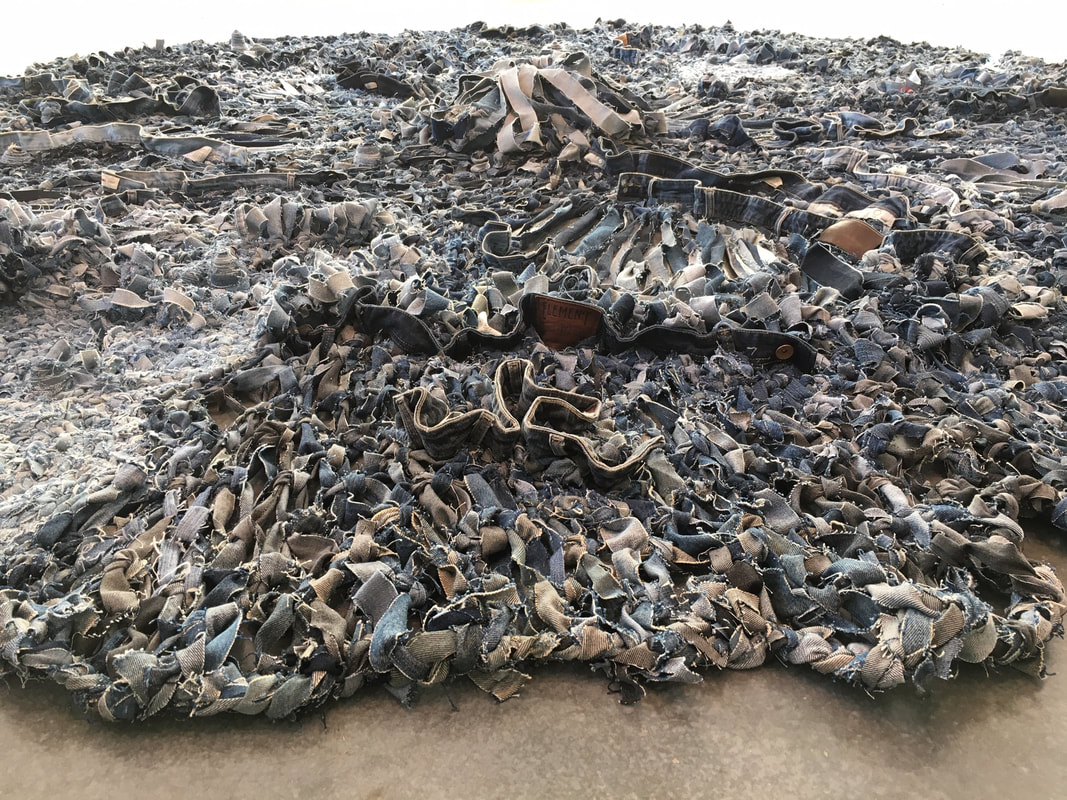
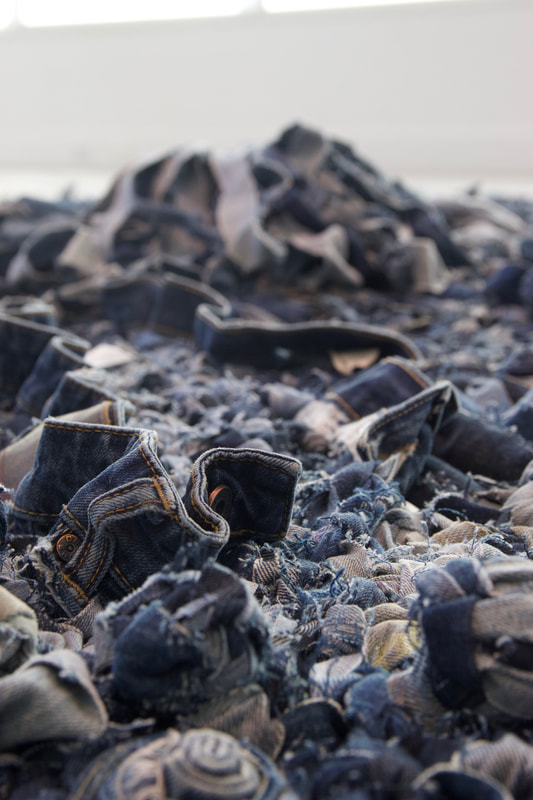
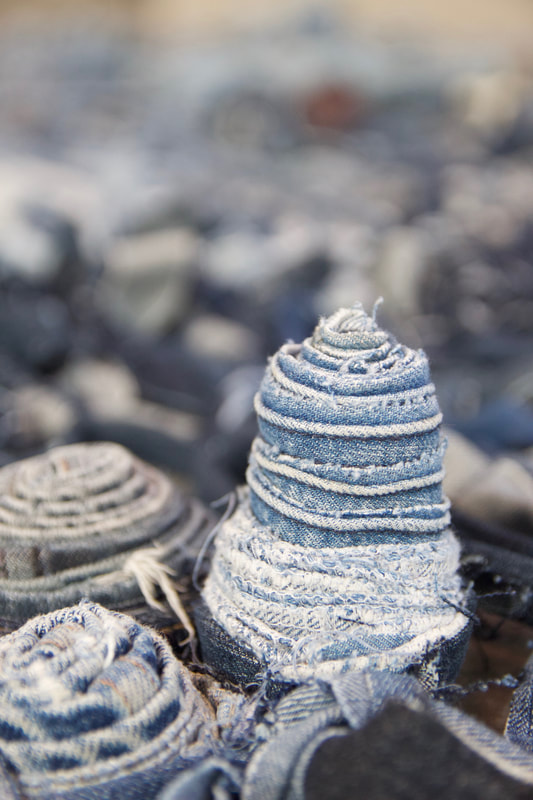
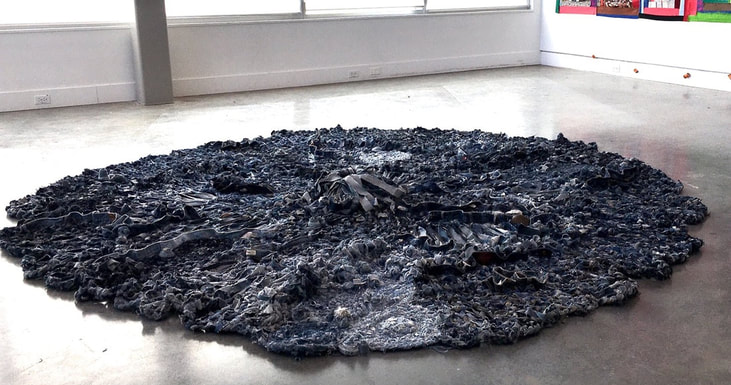
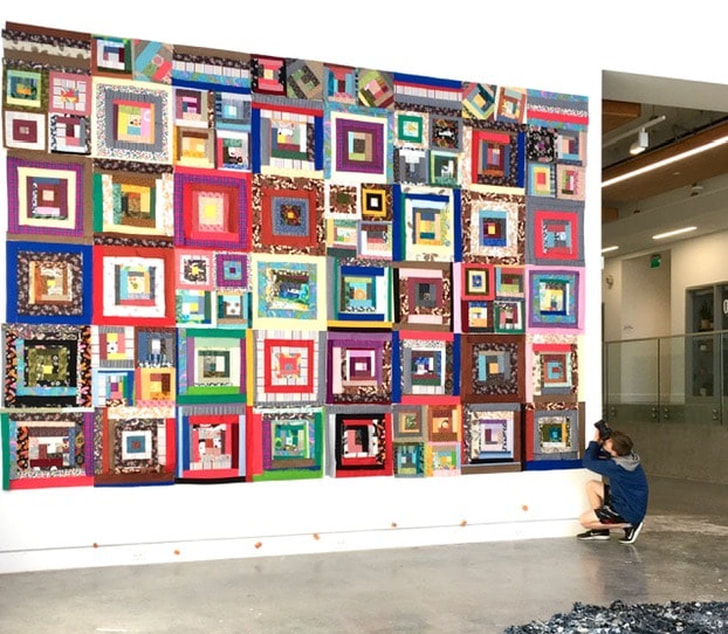
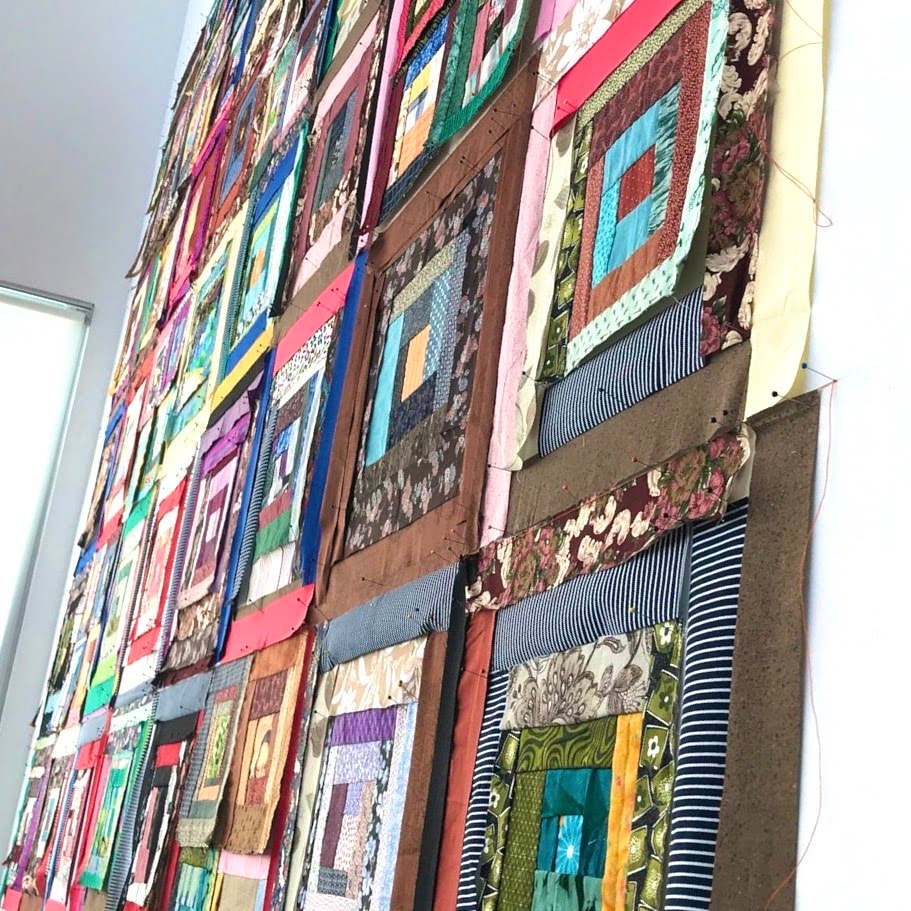
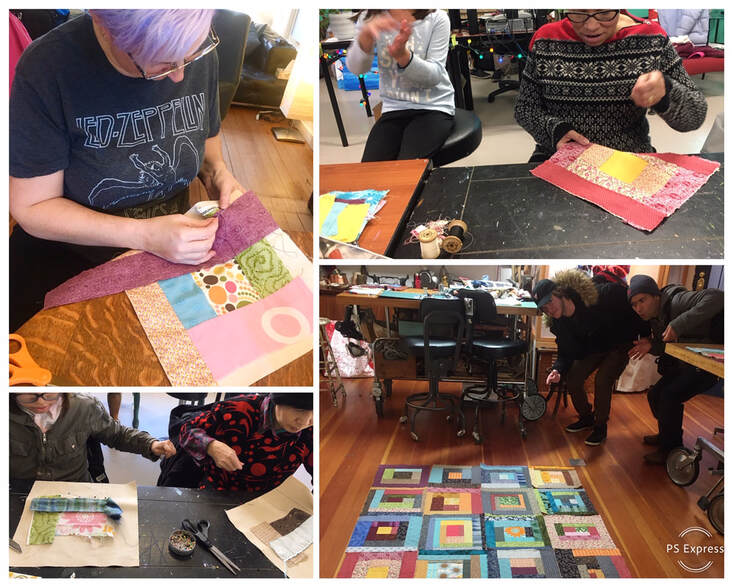
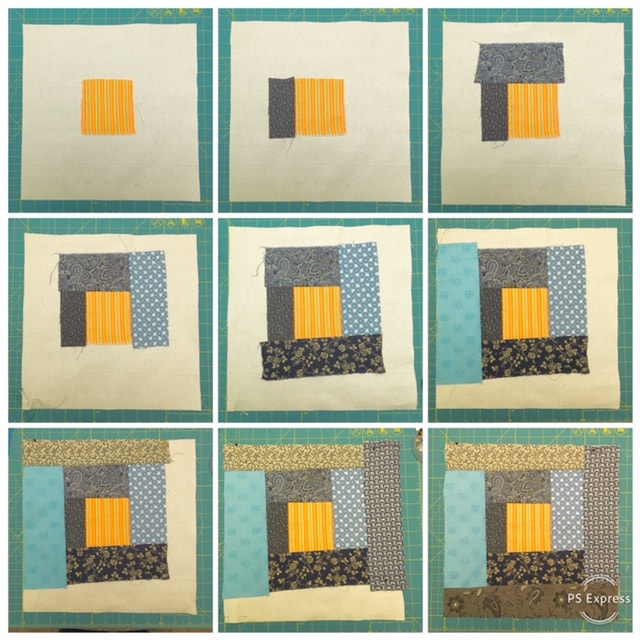
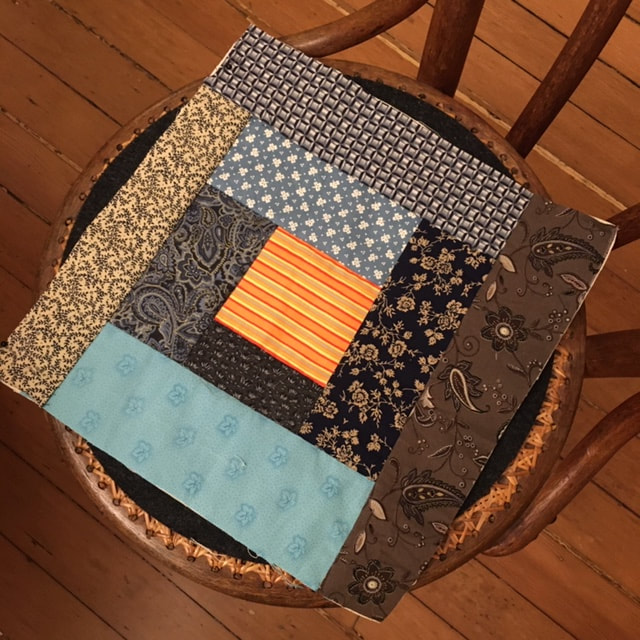
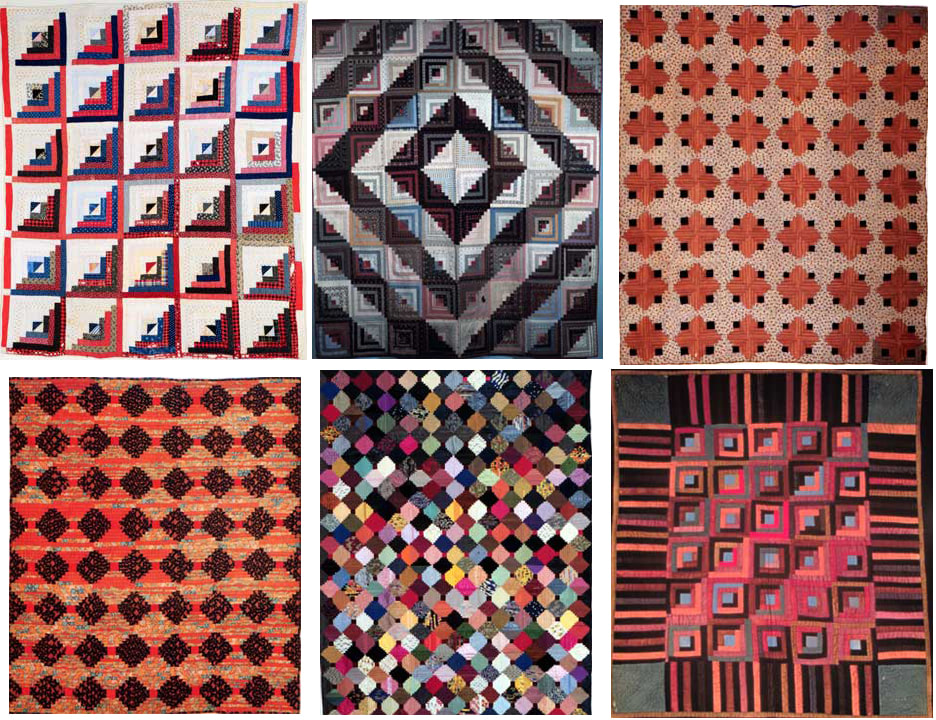
 RSS Feed
RSS Feed

